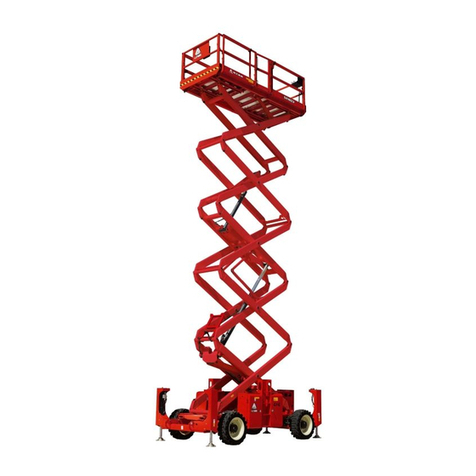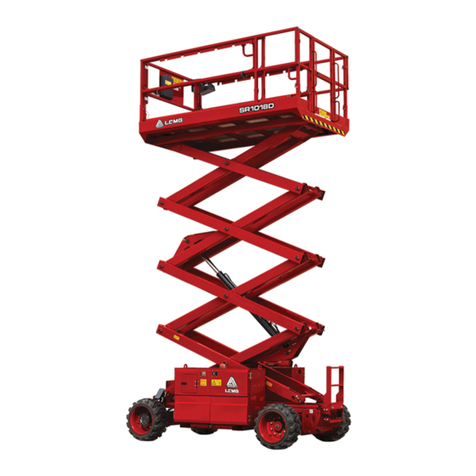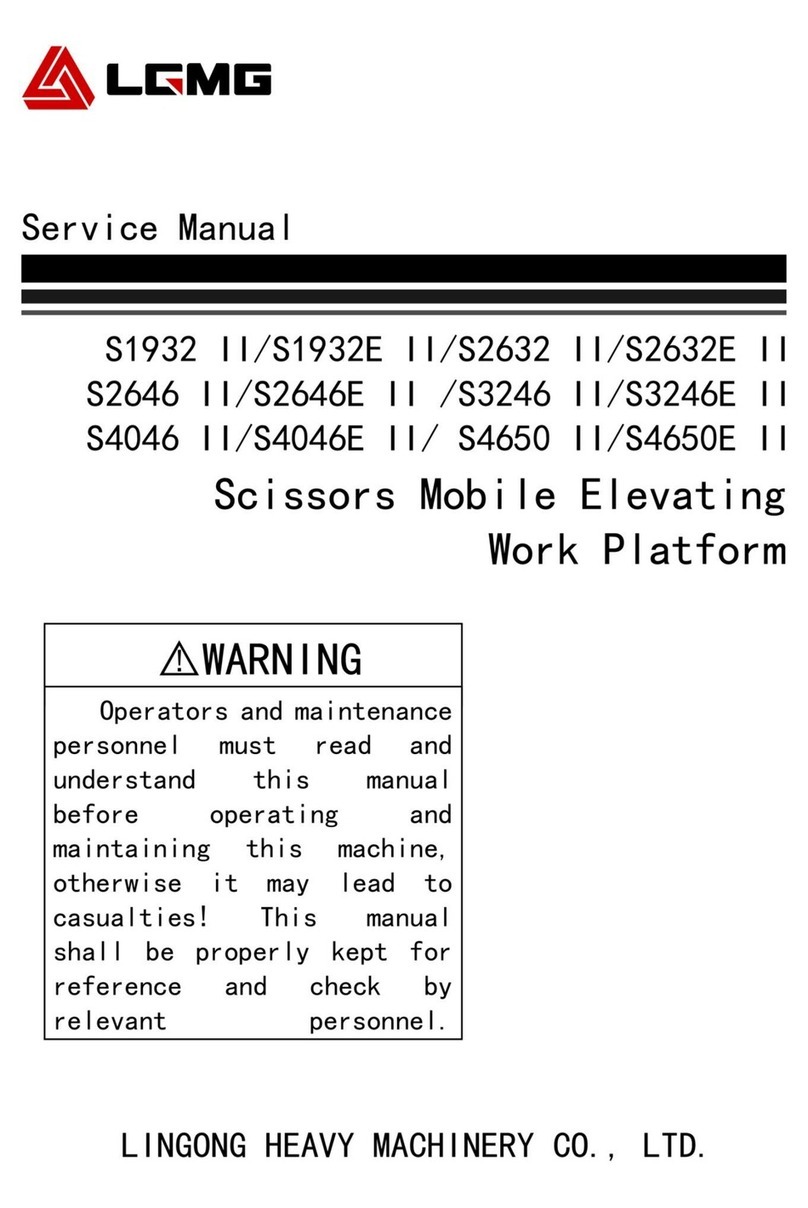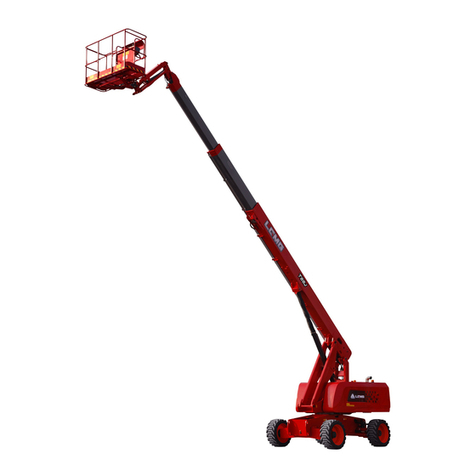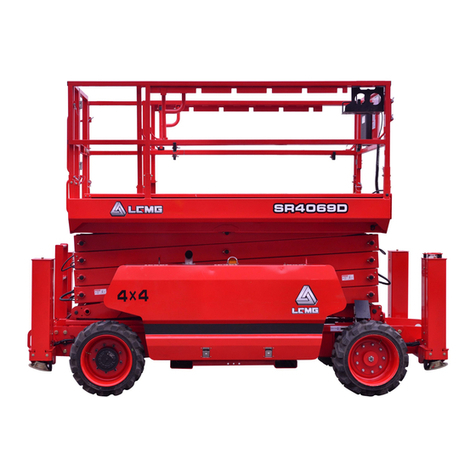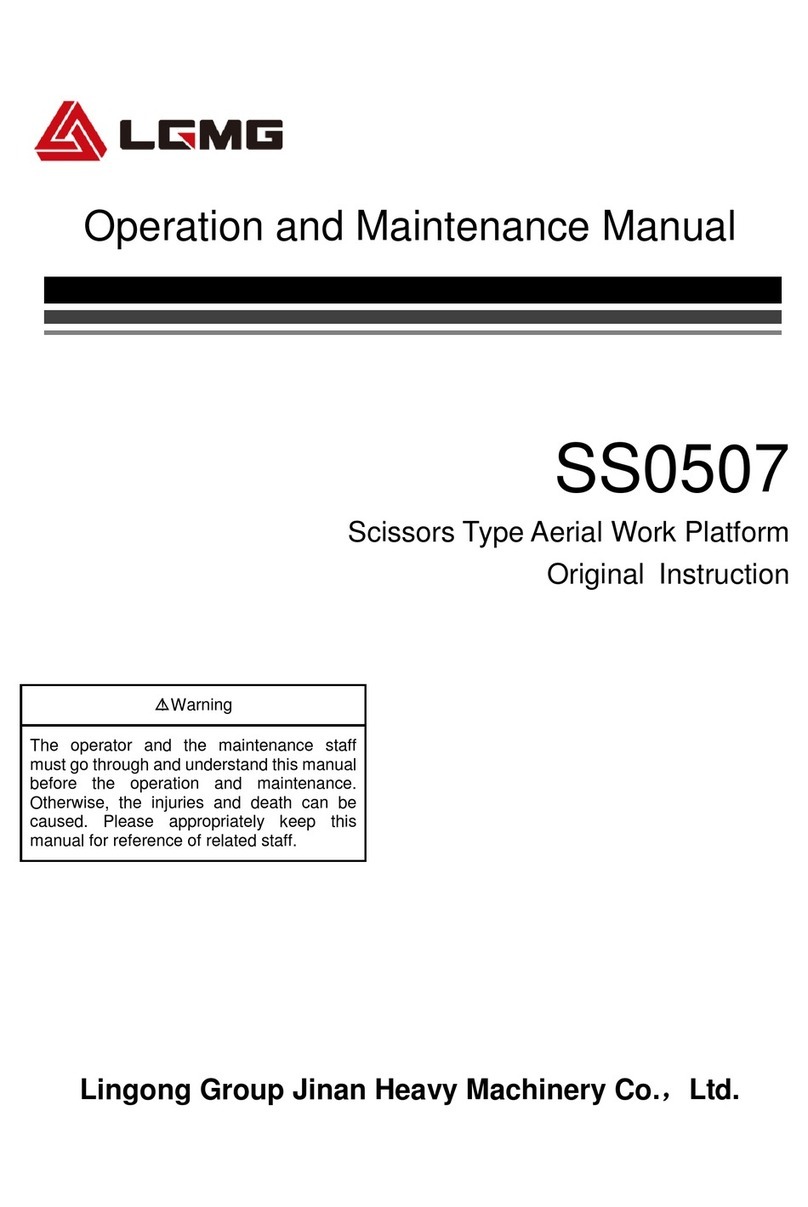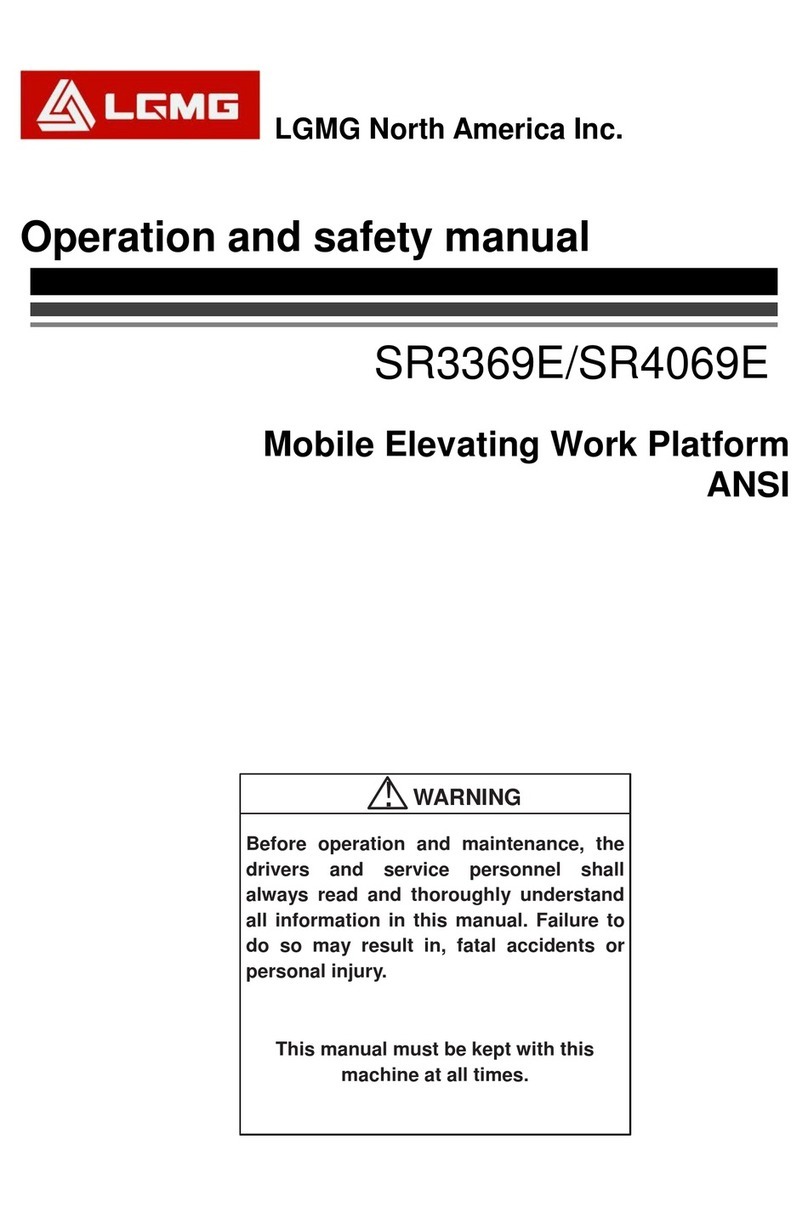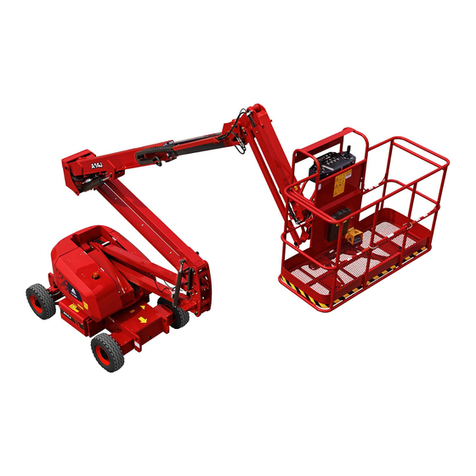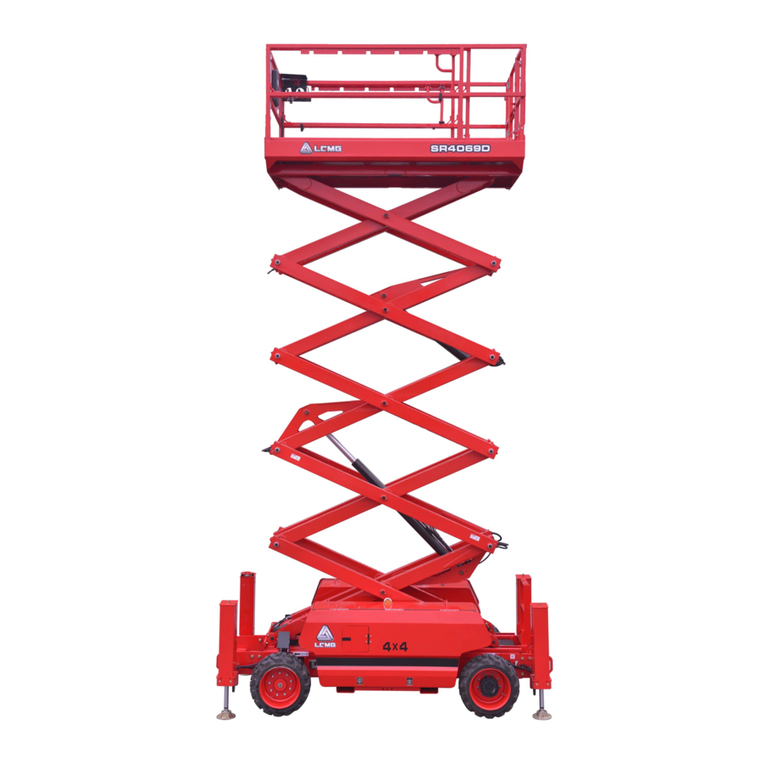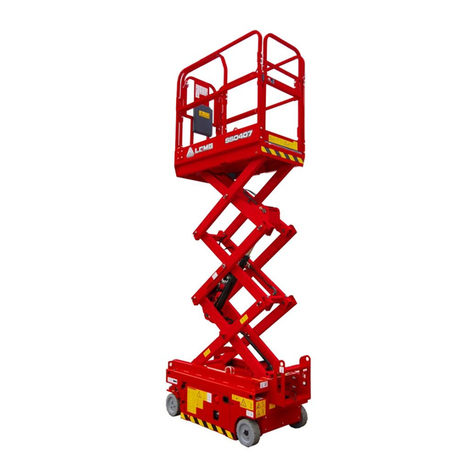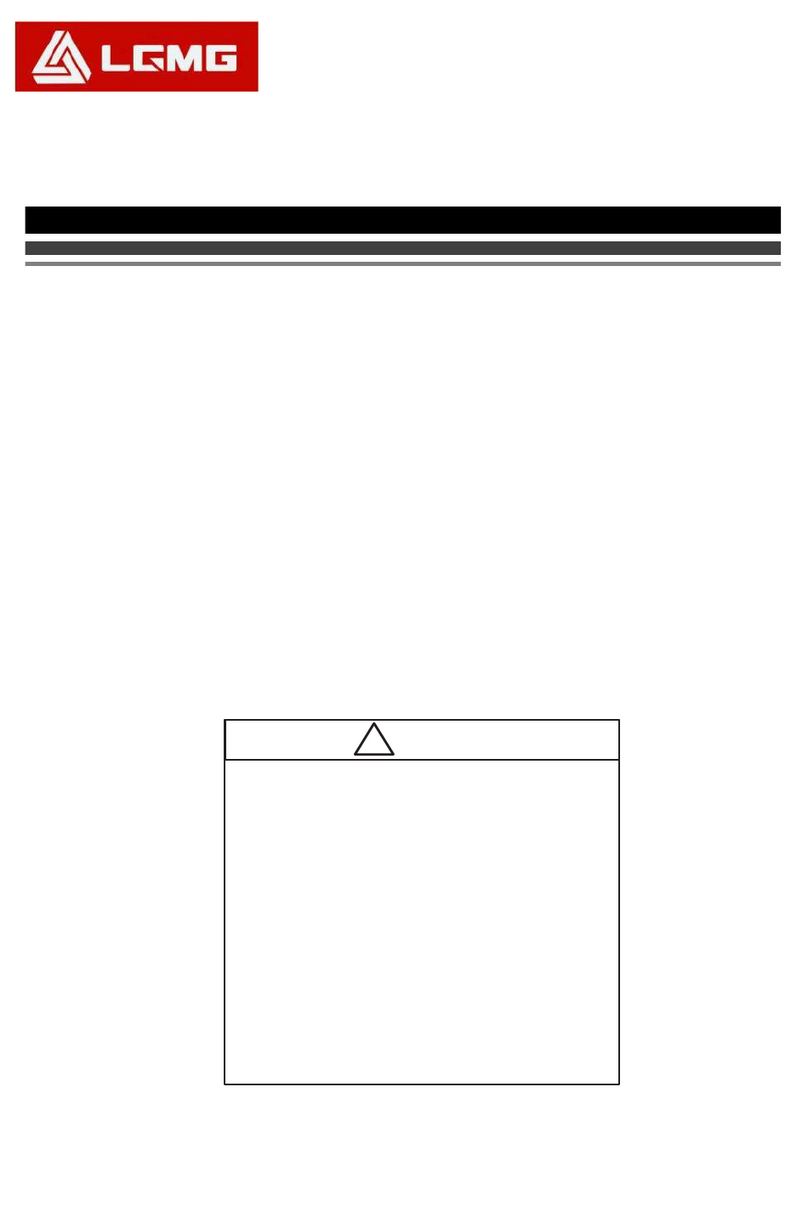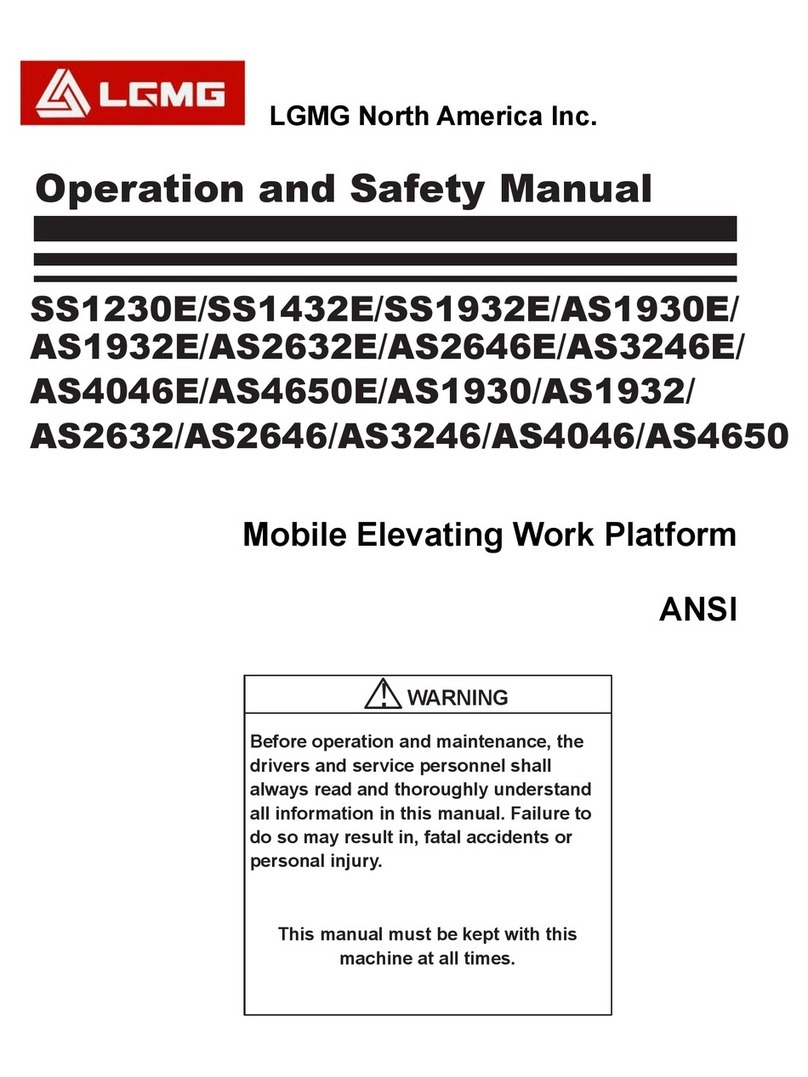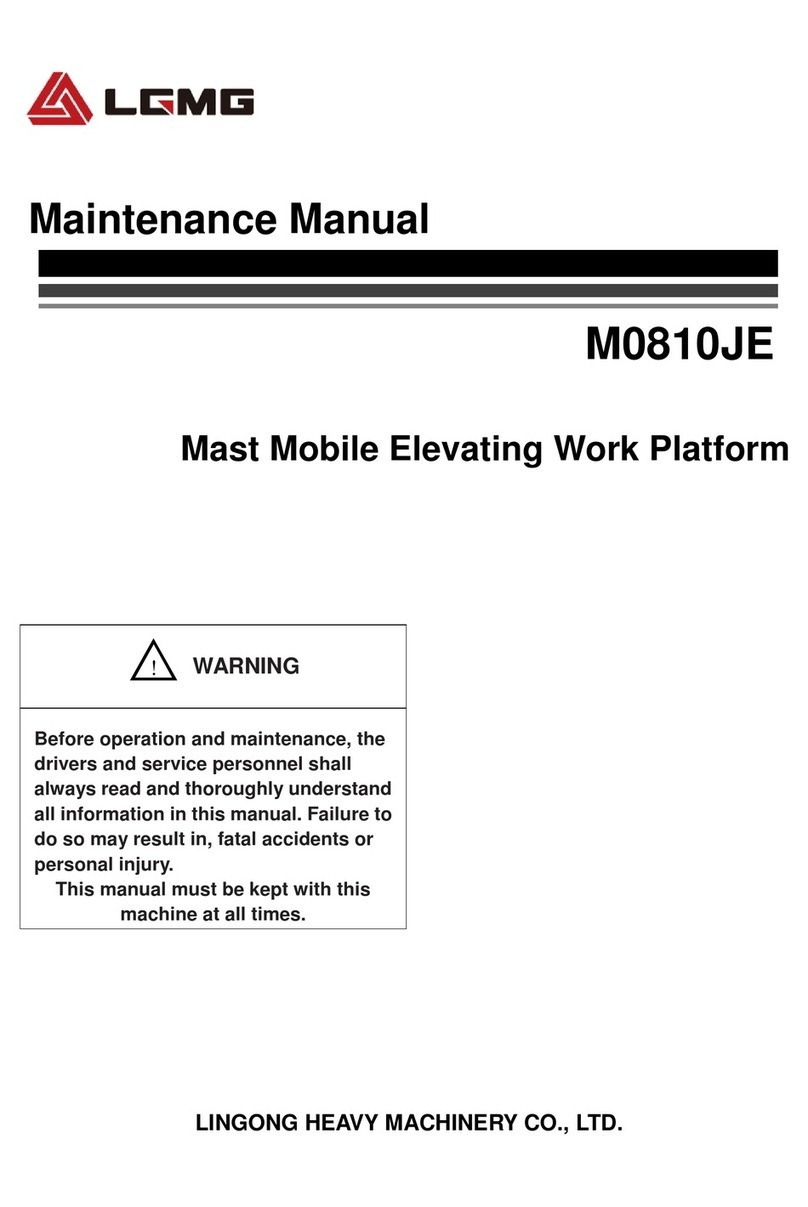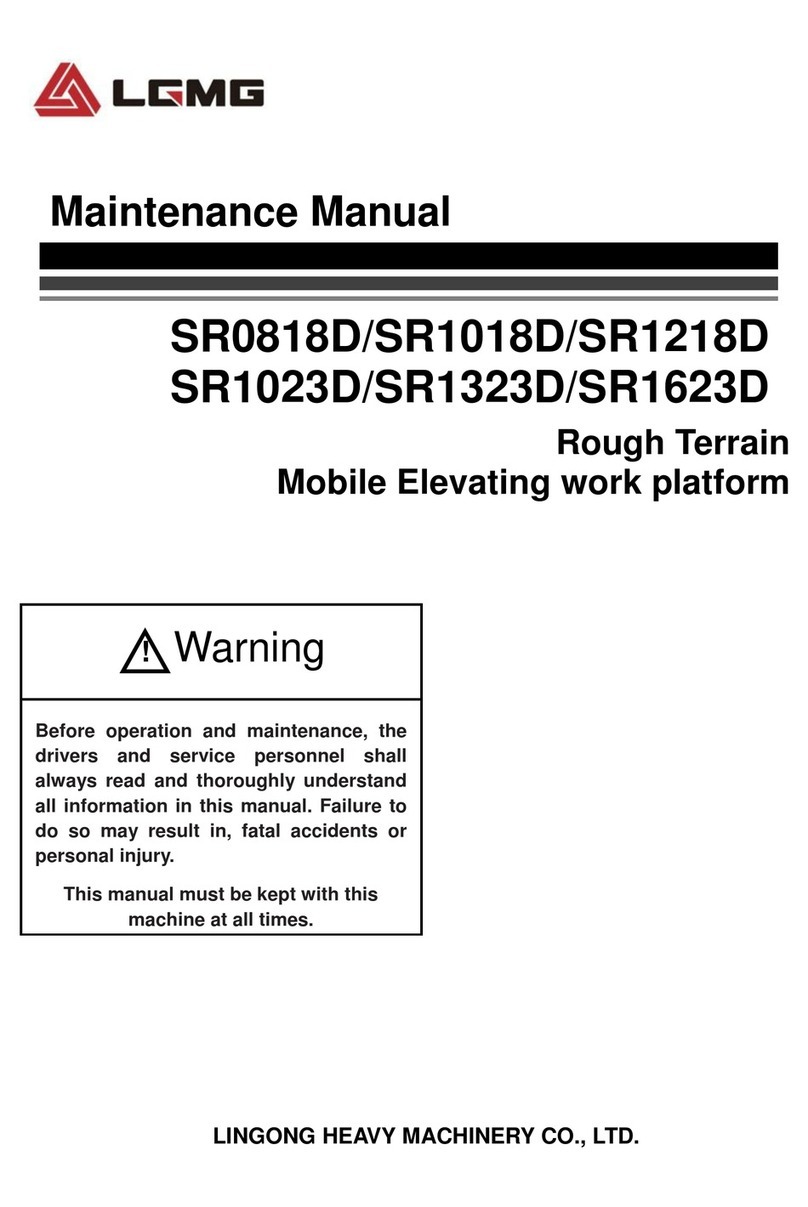
●Park the machine on a flat ground. The arm
rod shall retract to the stowed position.
Figure 1-1 Hydraulic oil dipstick
●Check the oil dipstick on the hydraulic oil tank.
The liquid level shall be within the M range
as shown in Figure 1-1. If the liquid level is
lower than M, the hydraulic oil shall be filled.
Select the hydraulic oil grade according to
the temperature.
△! CAUTION: Do not top off with
incompatible hydraulic fluids.
Hydraulic fluids may be incompatible
due to the differences in base additive
chemistry. When incompatible fluids
are mixed, insoluble materials may
form and deposit in the hydraulic
system, plugging hydraulic lines,
filters, control valves and may result in
component damage.
Check for hydraulic oil leaks every 8 hours or
every day.
△! CAUTION: Danger of personal
injury: Spilled hydraulic oil can
penetrate and burn the skin, Goggles
and protective gloves must be worn.
4
LGMG North America Inc. Maintenance Manual
●The leakage of high-pressure oil may not be
visible to eyes. Cardboard or wood chip
shall be used as a tool to check for hydraulic
oil leakage. It is forbidden to confirm it by
hand. Check oil droplets or oil residues on
the following components:
●Hydraulic tank, filter, pump, hydraulic cylinder,
motor, reducer, valve block, hydraulic pipe
●Check oil droplets or oil residues in the
following areas:
●Rear of arm rod, fly jib, upper of rotary table,
upper and lower of drive chassis, ground
area under equipment
1.4.3 Check for Engine Oil Level
△! Do not operate on running
engines!
No smoking and open fires!
Be careful when contacting with high
temperature engine oil. Danger of
scalding!
△! When operating on the oil system,
pay attention to the surface cleaning.
Carefully clean all areas involved. Blow
wet parts with compressed air.
△! Please observe the safety
regulations for engine oil and relevant
local regulations. Dispose of spilled
engine oil and filter elements as
required. Waste oil cannot penetrate
into the ground.












